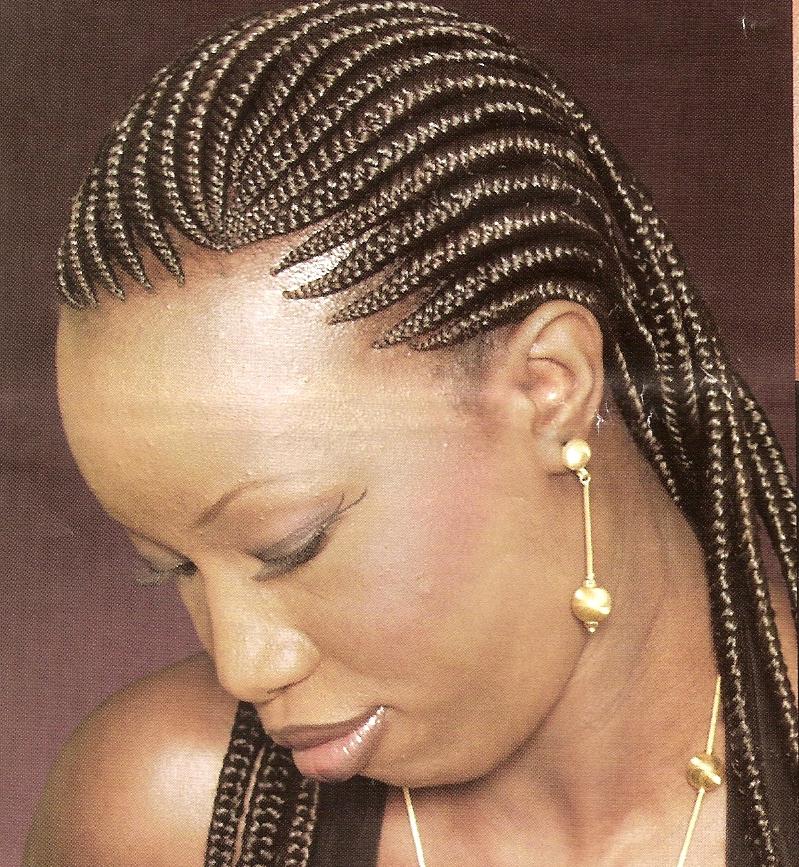
Love the way she looks

Due to the many tribal customs African
hairstyles were many and varied and usually signified status. Masai
warriors tied the front hair into sections of tiny braids whilst the
back hair was allowed to grow to waist length. Non-warriors and
women, however shaved their heads. Many tribes dyed the hair with red
earth and grease – some even stiffened it with animal dung. The complex
style of the Mangbetu women involved plaiting the hair thinly and
arranging over a cone-shaped basket frame, flaring the top then adorning
the whole thing with long, bone needles. Other tribes such as the
Miango took amore simple approach, covering their long ponytails with a
headscarf and adorning with leaves.
In the heat of Egypt, noblemen and women clipped their hair close to the head. But for ceremonial occasions heavy, curly black wigs were donned. Women’s wigs were often long and braided, adorned with gold ornaments or ivory hairpins. Men’s faces were generally clean shaved, but stiff false beards were sometimes worn.
Amongst the Muslim community the hair was traditionally concealed in public. Men wore a turban or fez and womens hair was hidden under the traditional veil. Both men and women visited the local public baths for grooming where the mans head and face were shaved and omens long hair was given a henna rinse.

Himba
hairstyles tell a lot about the person; identifying their social
status. For example, pre-pubescent girls wear two thick braids in front
of their faces – these look like ram horns. After puberty the braids are replaced by many strands hanging all
over their heads and faces. As she gets older the braids are lengthened
and tied back, indicating that she is ready for marriage. Once married,
an ‘erembe’ (a piece of goat leather) is tied to the top of her head.


No comments:
Post a Comment